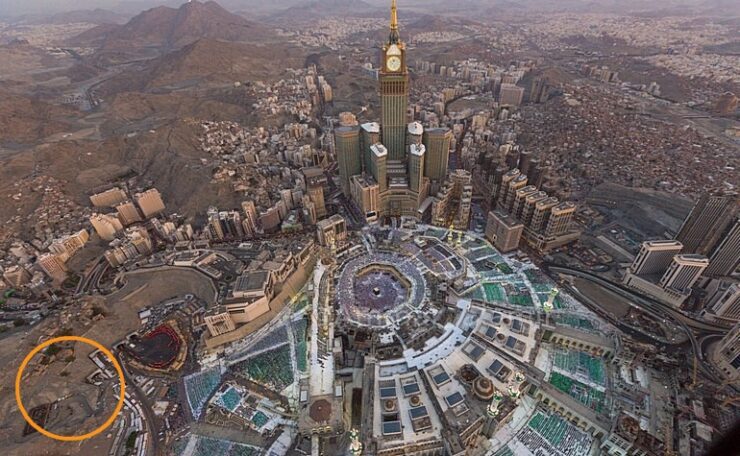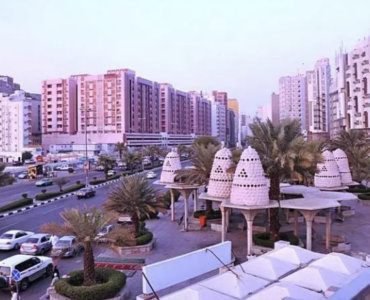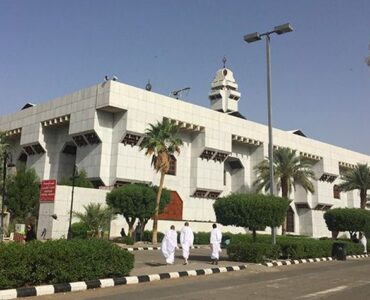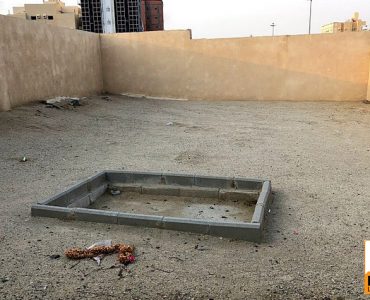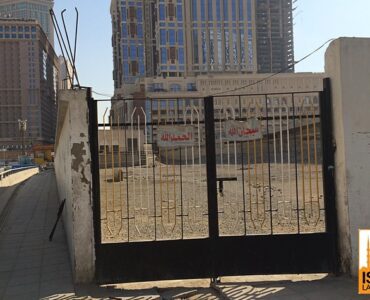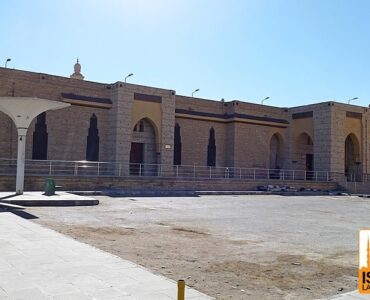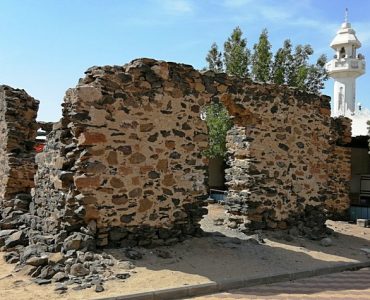This is the Valley of Abu Talib (She’eb Abi Talib), where the members of Banu Hashim and Banu Al-Muttalib (Muslims and non-Muslims) were forced to withdraw from Makkah and live here in a painful boycott for three years. The area was also known as the Valley of Bani Hashim. It’s currently known as the Ali Valley in tribute to Ali bin Abi Talib (رضي الله عنه).
Quraysh force a boycott of the Muslims
- When Islam began to spread the Makkans asked Abu Talib, the uncle and protector of the Prophet (ﷺ), to hand him over to them for execution but he steadfastly refused. Abu Talib acted fast and called on the members of Banu Hashim and Banu al-Muttalib to meet at the Ka’bah and convinced them to pledge that they would protect their clansman, Muhammad (ﷺ). Abu Lahab, another of the Prophet’s uncles and self-proclaimed sworn enemy, refused to take the pledge and declared he was on the side of the Quraysh.
- The Quraysh held a meeting and decided to outcast the Banu Hashim and Banu al-Muttalib by placing them under a total social boycott. The other clans from the Quraysh would not marry their daughters, transact business with them, keep company with them, nor would they accept any peace overtures from these two clans until they handed over the Prophet (ﷺ).
- Once all the people present had agreed with the points mentioned above, Baghid bin Amir bin Hashim put this pact in writing. The Quraysh chiefs signed this document and the parchment was hung in the Ka’bah in order to give it authority. This was done on the 1st Muharram, in the seventh year of the Prophet’s (ﷺ) mission. When the deed was done, Baghid’s hand, or at least some of his fingers, became paralysed.
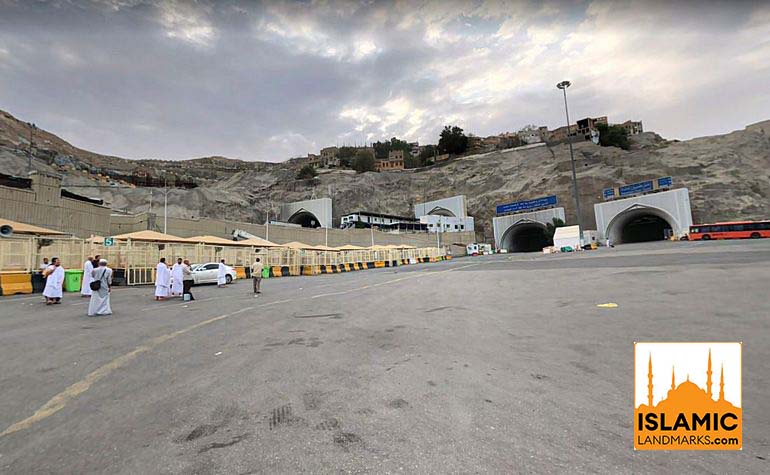

The hardships the Muslims had to face
- The Prophet (ﷺ), along with Abu Talib and clan members of Banu Hashim and Banu al-Muttalib were forced to withdraw from Makkah and live in She’eb Abi Talib, which was a subsection of one of the gorges that ran down to Makkah. The valley rested between Mount Abu Qubais to the south, and Mount Abyad to the north.
- The boycott was devastating and for many months they lived in misery. It was so rigorously applied and food was so scarce that they had to eat the leaves of trees. The women, and more specially the children and suckling babies would cry with hunger which could be heard all over the valley. The Quraysh told the merchants not to sell any goods to them. Prices were increased to prevent them from buying even essentials. They remained in that state for three years. Apart from some kind Qurayshi people who secretly sent food to them they were totally abandoned. Despite such grim circumstances, the Prophet (ﷺ) never ceased inviting non-Muslims to Islam. He was particularly active during the time of Hajj. It was at this time that he would speak to tribes that had travelled to Makkah from all over the Arab world.
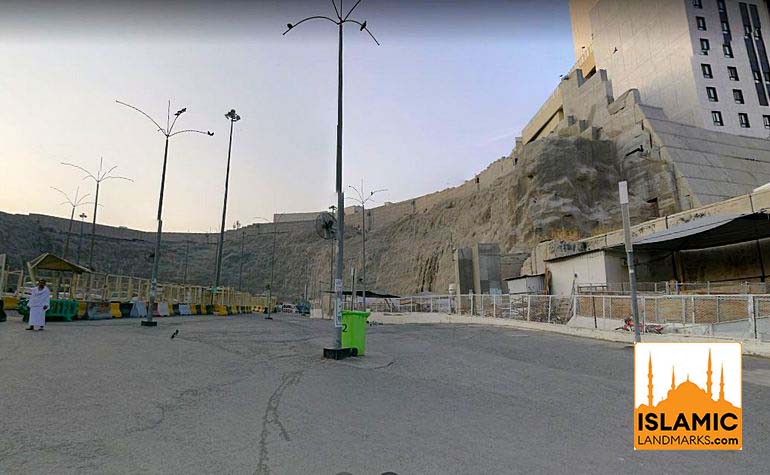

Support by some of the Quraysh
- A group of fair-minded Quraysh, led by Hisham ibn ‘Amr, hated this unfair boycott. Hisham was highly respected among his people. He contacted some men of the Quraysh whom he knew to be kind-hearted and considerate. He told them it was shameful to allow such tyranny to continue and asked them to abandon the unjust contract. When he had persuaded five men to agree, they met together to work towards this end. When the Quraysh were assembled the next day, Zuhayr ibn Abi Umayyah, whose mother was the aunt of the Prophet (ﷺ), faced the people and demanded, “People of Makkah! Do we eat and clothe ourselves while the Banu Hashim are perishing, unable to buy or sell? By Allah, I will not sit down until this unjust document is torn up!”
- Abu Jahal became suspicious of the sudden rebellion but Abu Talib saw his opportunity to step in. He had come into the precincts of Ka’bah to tell the Quraysh that the Prophet (ﷺ) had received a revelation about the fate of the wicked parchment. He stood up, and facing the Quraysh, told them that Allah had revealed to the Prophet (ﷺ) that termites had eaten the parchment inside the Ka’bah. The only thing that remained of the document, Abu Talib said, were the words “In Your Name, O Allah.” Abu Talib then challenged the Quraysh, saying that if the Prophet’s claim turned out to be false, he would no longer stand between them and the Prophet (ﷺ). However, if the Prophet had spoken the truth, the Quraysh should end the boycott. The Quraysh accepted Abu Talib’s challenge.
The boycott is nullified
- When Mut’im bin Adiy rose to retrieve the parchment, the assembly saw that it had been destroyed. Its only remaining words were “Bismika Allahumma” (In Your Name, O Allah) and Allah’s name. Allah (ﷻ) had given the Quraysh yet another sign but once again they refused to admit their error and accept Islam. Their only concession was to end the boycott. The Prophet (ﷺ) and his Companions came out of the mountain pass and were allowed to live in Makkah once again.
References: When the Moon Split – Shaikh Safiur-Rahman Mubarakpuri, Fazail-e-Aamal – Sheikh Zakariyya Kandhalvi, Muhammad the last Prophet – Sayyed Abul Hasan Ali Nadwi, Makkah at the time of Prophet Muhammad (PBUH) – BinImad Al-Ateeqi

